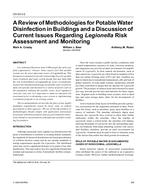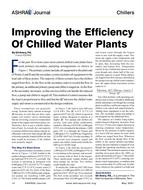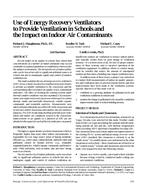This paper addresses the question of the performance of a ground coupled heat pump (GCHP) system with a water-source heat pump package designed expressly for such systems operating in a northern climate. The project objective was to minimize the life-cycle cost of a GCHP system by optimizing the design of both the heat pump package and the ground coil in concert. In order to achieve this objective, a number of modelling tools were developed to analyze the heat pump’s performance and cost, and the ground coil’s performance.
The life-cycle cost of a GCHP system (water-source heat pump with a horizontal ground coil) for an 1800 ft2 (167 m2) house in Pittsburgh, PA, was minimized for a 7 year economic life . Simple payback for the optimized GCHP system, relative to conventional air-source heat pump, was under 3 years. The water-source heat pump package resulting from this optimization is calculated to cost 21% more than its conventional counterpart with a heating coefficient of performance (COP) about 20% higher, and a cooling COP about 23% higher. In the GCHP system modeled, its annual energy savings are predicted to be about 11% compared to a system designed around a conventional heat pump while having about the same installation cost. (The cost differential is made up in savings due to a smaller ground coil.) Similar GCHP system performance improvement can be attained by using a longer ground coil. Sensitivity studies indicate, however, that the cost premium for the longer coil is difficult to recoup in a reasonable time. The major conclusion of this study is — GCHP system performance improvement can be attained by improving the water-source heat pump package at lower cost than by improving the ground coil; the improvement being relative to a ground coil optimized for a purchasable heat pump.
Units: Dual
Citation: Symposium, ASHRAE Transactions, 1985, vol. 91, pt. 2B, Honolulu, HI
Product Details
- Published:
- 1985
- Number of Pages:
- 19
- File Size:
- 1 file , 1.5 MB
- Product Code(s):
- D-HI-85-24-2


